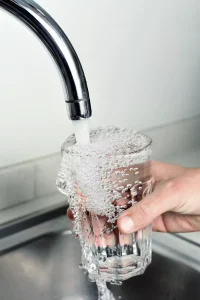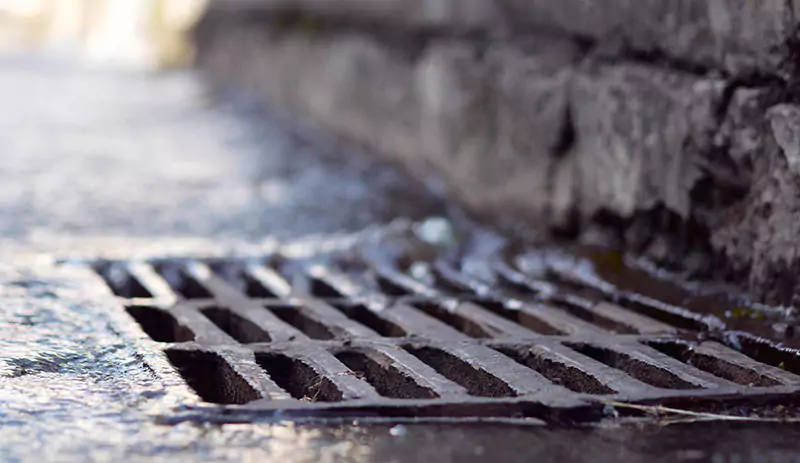IUVA One Water
Cassidy Yates MS Option Student, Department of Civil and Environmental Engineering, University of New Hampshire
Nicola Elardo MS Option Student, Department of Civil and Environmental Engineering, University of New Hampshire
Castine Bernardy Ph.D. student, Department of Civil and Environmental Engineering, University of New Hampshire
The US Environmental Protection Agency (EPA) defines potable water reuse as “the process of using treated wastewater for drinking water.” Two types of potable water reuse exist: direct and indirect. Direct potable reuse involves full treatment of wastewater to potable standards, followed by direct distribution. Alternatively, indirect potable reuse uses an environmental buffer prior to treatment at a drinking water treatment plant. Aquifers, lakes and rivers all can be used as environmental buffers. For water-scarce regions of the world, potable reuse is becoming increasingly more necessary, but implementation isn’t without social and technical hurdles to overcome.
UV is an attractive technology for potable water reuse treatment. UV can disinfect pathogens (virus, bacteria and protozoa) and break down harmful pollutants in the water. UV can degrade N-Nitrosodimethylamine (NDMA) by means of UV photolysis and has potential to break down pollutants such as 1,4- dioxane and other contaminants of emerging concern (CECs) by means of advanced oxidation and reduction processes. Simultaneously, CECs also can present challenges in potable water reuse, as highlighted in the Water Research Foundation’s 2021 Technical Brief: Constituents of Emerging Concern Using a One Water Approach. Incomplete removal of some CECs (such as per- and polyfluoroalkyl substances [PFAS] within wastewater treatment) can lead to their presence in other types of water, including drinking water sources. Ongoing research is exploring the presence and toxicity of low-level CECs and their impacts on potable reuse.
The Water Research Foundation also is researching the use of UV/chlorine in potable reuse to assess the applicability, operational issues and potential byproducts. This research aims to look at integrating advanced oxidation processes (AOPs) into potable water reuse technologies. The resulting outcome will be a guidance document for utilities considering incorporation of UV/chlorine AOPs into their own systems.
Implementation of potable reuse utilizing UV is gaining popularity around the US. Companies such as Carollo Engineers have systems up and running in California, Virginia, Georgia and Texas, with others in the development stages. The RBAT technique uses micro/ultrafiltration, reverse osmosis and UV advanced oxidation processes. The CBAT technique uses ozone biologically active carbon, granular activated carbon, ultrafiltration and UV disinfection to treat secondary effluent for potable reuse.
 These highly effective systems face two main challenges: lamp/ballast failure and reduced performance due to variations in UV transmittance (UVT). When lamps and ballasts fail, the water utility must shut down until the backup lamp has properly warmed up, reducing production. Strong variations in UVT can reduce the efficacy of the UV treatment, thus producing water with higher pollutant and pathogen loads than designed. While these technical challenges are not unique to potable reuse, they can add to greater reuse challenges, such as public health protection and consumer concerns, but are mitigated with redundant backup systems and a conservative design.
These highly effective systems face two main challenges: lamp/ballast failure and reduced performance due to variations in UV transmittance (UVT). When lamps and ballasts fail, the water utility must shut down until the backup lamp has properly warmed up, reducing production. Strong variations in UVT can reduce the efficacy of the UV treatment, thus producing water with higher pollutant and pathogen loads than designed. While these technical challenges are not unique to potable reuse, they can add to greater reuse challenges, such as public health protection and consumer concerns, but are mitigated with redundant backup systems and a conservative design.
Other challenges in potable reuse outlined by the EPA’s National Water Reuse Action Plan include public health protection, cost, safety risk, consumer concerns, inadequate technologies, inadequate monitoring, unintended downstream impacts and unclear, inconsistent or conflicting regulations. Addressing these challenges effectively requires participation of a range of stakeholders – especially industrial actors – and regulators. With adequate, cost-effective, small- and medium-scale technology, and more innovation on the rise, “fit for purpose” water reuse can be implemented. This, in turn, can lead to larger-scale projects.
As an example, in 2013, the FDA, state food safety and agriculture regulators and dairy industry leaders, along with key scientists and technology providers, agreed to allow the reuse of water evaporated from milk under specific, clear conditions, including the use of appropriate validated and verified doses of UV. In the cooperative framework – called the Pasteurized Milk Ordinance (administered by the National Conference of Interstate Milk Shippers) – business and government have a platform to work together to accept reuse, and the users benefit. A typical dairy plant utilizing this technology can save 75,000 gallons a day that it can recycle into cleaning, cooling and other operations. Implementation of reuse across sectors can provide the foundation for moving potable water reuse into the mainstream.
Another challenge facing reuse facilities and all water utilities alike are cyberattacks and ransomware attacks. These systems especially are vulnerable as their operating ability has a direct correlation to human health and wellbeing. Recent cyberattacks in Florida and California have increased the national attention on this issue. Many reports state that all water utilities should be proactive about protecting their facilities. The EPA offers resources to do so, including a vulnerability self-assessment tool, incident action checklist and low-cost loans for projects that incorporate new approaches to cyber security.
Acknowledgements
Thanks to Phyllis Posy of Posy Global, Andrew Salveson of Carollo Engineers and Ron Hofmann of the University of Toronto for their industry insight and contributions to this column.
The “One Water” column seeks to highlight the application of UV technologies to the traditional areas of drinking water, wastewater, water reuse, agricultural and industrial process water, and stormwater. The goal of the column is to further evolve understanding and focus, driven by YP members, on sustainable water – reminding stakeholders that there is one water cycle on earth.
Contact: Cassidy Yates, cry1004@wildcats.unh.edu; Nicola Elardo, nicola.elardo@unh.edu; Castine Bernardy, cab2020@wildcats.unh.edu
References
- Diamond, J., Flippin, J., & Burton, A. (2021). Technical Brief: Constituents of Emerging Concern Using a One Water Approach. The Water Research Foundation.
- EPA. (2019). National Water Reuse Action Plan. US Environmental Protection Agency.
- EPA. (2020). Potable Water Reuse and Drinking Water. US Environmental Protection Agency.
- Smith, C. (2021, June 4). How Simple Fixes Can Prevent Cyber Attacks on Water Systems. Governing.
- The Water Research Foundation. (2019). UV/Chlorine AOP in Potable Reuse: Assessment of Applicability, Operational Issues, and Potential By-Products (RFP 5050).
- Wright, H., Salveson, A., & Sotirakos, B. (2019, June 7). UV Regulations: Wastewater and Reuse. UV Solutions.






